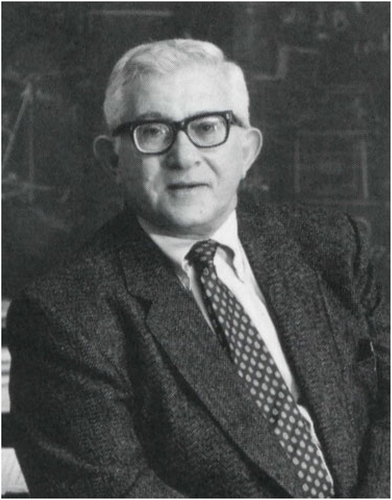Dr. Abraham Liboff, an Emeritus Editor-in-Chief of this journal, passed away on January 9, 2023, at the age of 95. Abe was a gentleman, a renowned scientist, and a pioneer of bioelectromagnetics. His work has inspired generations of nonionizing-electromagnetic field (EMF) researchers.
Abe is credited as the original developer of the ‘Ion Cyclotron Resonance’ hypothesis. One of the rare hypotheses in bioelectromagnetics on the mechanism of interaction between EMF and living organisms. It suggests the possibility of biological interaction of low-intensity extremely-low frequency and static EMF. This explains Abe’s interest in the geomagnetic field and his belief that biological effects are mostly caused by extremely-low frequency components of EMF. Numerous experiments have provided data that supports the ‘Ion Cyclotron Resonance’ mechanism. Since much knowledge has accumulated over the years on the cellular and molecular effects of electromagnetic fields and the recent concerns on the effects of ambient EMF on wildlife, there is a need to revisit Abe’s ‘Ion Cyclotron Resonance’ hypothesis.
A survey of Abe’s publications in the last ten years (see references below) shows the following topics: geomagnetic field imprinting in embryonic birds, magnetic field and consciousness, weak (1–10 nT) ambient ELF magnetic fields contribution from human sources, interactions of low-frequency electromagnetic fields with water, electromagnetic basis of social interactions, and the Warburg effect in cancer cells. Abe had the curiosity of a true scientist.
When Dr. Liboff took over as Editor-in-Chief of the journal, he changed the name of the journal from Electro and Magneto Biology to Electromagnetic Biology and Medicine, a title that has served the journal well with the addition of Medical research. He also designed the cover of the journal. At one of the yearly Bioelectromagnetics Society meetings, he invited one of us (JRS) to join the Editorial Board of Electromagnetic Biology and Medicine as a Co-Editor-in-Chief with him. It was a challenging experience to be sure, but Abe was a true mentor, coach and gentleman, and through his kindness and patience, made the job worth every minute. His knowledge of nonionizing electromagnetic fields and the literature was endless. Later, when Abe decided to step down from the Editor-in-Chief position, he recommended Dr. Henry Lai who graciously accepted the offer to take over Abe’s position and joined the journal as Co-Editor-in-Chief.
Dr. Abraham Liboff will be missed, but his influence will be felt for many years to come.
References
- D’Emilia, E., M. Ledda, A. Foletti, A. Lisi, L. Giuliani, S. Grimaldi, and A. R. Liboff. 2017. Weak-field H3O+ ion cyclotron resonance alters water refractive index. Electromagn. Biol. Med 36:55–62. doi:10.1080/15368378.2016.1181082.
- Liboff, A. 1985. Geomagnetic cyclotron resonance in living things. J. Biol. Physics 13:99–102. doi:10.1007/BF01878387.
- Liboff, A. R. 2015. Is the geomagnetic map imprinted in pre-emergent egg? Electromagn. Biol. Med 35:167–69. doi:10.3109/15368378.2015.1045069.
- Liboff, A. R. 2016a. Magnetic correlates in electromagnetic consciousness. Electromagn. Biol. Med 35:228–36. doi:10.3109/15368378.2015.1057641.
- Liboff, A. R. 2016b. A human source for ELF magnetic perturbations. Electromagn. Biol. Med 35:337–42. doi:10.3109/15368378.2015.1107841.
- Liboff, A. R. 2017. The electromagnetic basis of social interactions. Electromagn. Biol. Med 36:177–81. doi:10.1080/15368378.2016.1241180.
- Liboff, A. R. 2019. ION cyclotron resonance: Geomagnetic strategy for living systems? Electromagn. Biol. Med 38:143–48. doi:10.1080/15368378.2019.1608234.
- Liboff, A. R. 2020. The Warburg hypothesis and weak ELF biointeractions. Electromagn. Biol. Med 39:45–48. doi:10.1080/15368378.2020.1737810.
- Liboff, A. R., C. Poggi, and P. Pratesi. 2017. Weak low-frequency electromagnetic oscillations in water. Electromagn. Biol. Med 36:154–57. doi:10.1080/15368378.2016.1227332.

